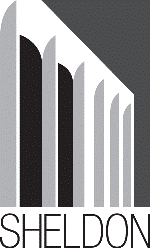Fine and Performing Arts, Hixson-Lied College of

Sheldon Museum of Art: Catalogs and Publications
Date of this Version
1996
Citation
The Sheldon Statewide Program, Sheldon Memorial Art Gallery and Sculpture Garden. September 1995- June 1996.
Abstract
The history of art, like many academic disciplines, imposes certain biases on our perceptions. Because the Renaissance captured the imagination of the Western mind, oil painting and bronze sculpture prevail as the most respected media. This acclaim may be appropriate, but in lauding these traditional art forms, other media have not always received the attention they deserve. In the U.S., watercolor, a medium alternately referred to as painting and drawing, is often still identified as the domain of social young women and amateurs, as was the case in the 19th century. But the history of watercolor painting begins impressively with Albrecht Durer (1471-1528) whose highly detailed renderings of landscapes and animals remain the prime model for naturalist studies. In the 19th century, J. M. William Turner initiated the modern era with his loose washes of color that capture the subtle atmospheres of London fog and cloudy skies, which are the standard for many contemporary watercolorists. Transparent and Opaque offers the viewer a concise history of American 20th century watercolor painting. This selection of twenty works is a mere indication of the medium's evocative potency, and a clear indication that its best examples need not be relegated within art history.
Whether executed with a dry brush to effect opaque imagery, or with wet washes of translucent color, the watercolorist must possess an uncommon confidence. Unlike oil paints, which can be endlessly corrected or radically altered, watercolor is an unforgiving medium that responds best to the spontaneity and assurance of the skilled artist. The apparent ease and facility we see in works by artists such as Charles Demuth, Milton Avery, Lyonel Feininger, Childe Hassam, Georgia O'Keeffe, John Marin, and Abraham Walkowitz is the result of an informed intuition and an element of risk - their marks are immediately and permanently absorbed into the thirsty rag paper. There is no turning back. The opacity of works by artists such as Charles Burchfield, Dong Kingman, James Torlakson, Gladys Nilsson and Neil Welliver requires a similar tenacity, but a more methodical, less emotional hand. Again the medium is irreversible and clings to the paper with a permanence unknown to oils.
Between the polarities of veiled washes and intense color are the works of artists such as Gail Butt, Millard Sheets and Walt Kuhn who balance areas of saturated color with expressive nuances of watery hues. An artist such as Nathan Oliveira uses minor "accidents" to enhance the imagery, such as the pooled pigment that represents the subject's hair. Arthur Dove's application of paint to a rough, heavy paper creates a dappled effect that suggests highlighting of the abstract form. All these artists have used the inherent properties of the medium to their advantage, creating paintings that are illuminated by their paper supports and softened by the properties of water combined in surprisingly diverse tonalities.


Comments
All images are copyright by the original artists. Publication copyright 1996 The Regents of the University of Nebraska